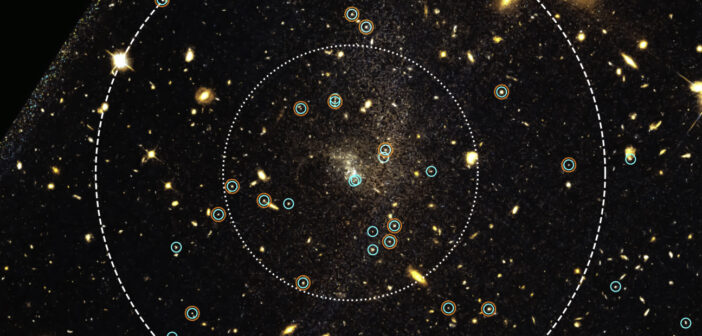Ultra-diffuse galaxies are as large as the Milky Way but contain only a smattering of stars and gas, scarcely enough to fill a dwarf galaxy. Observations suggest that these oddly faint galaxies are common, leaving astronomers puzzling over how they form. To disentangle the history of the ultra-diffuse galaxy UGC 9050-Dw1, Catherine Fielder (Steward Observatory) and collaborators tracked down its globular clusters: spherical collections of hundreds of thousands of stars that can hold clues to a galaxy’s star formation and merger history. The team identified 52 globular clusters (cyan circles) in new observations from the Hubble Space Telescope, shown above. This is an exceptionally large number of globular clusters for a galaxy of UGC 9050-Dw1’s brightness; 20% of the galaxy’s light comes from globular clusters! The clusters are all roughly the same color, which suggests that they are composed of stars of the same age and metallicity. This hints that UGC 9050-Dw1’s globular clusters formed in a single burst of star formation, which could have been triggered by a merger. Fielder and collaborators favor the merger of dwarf galaxies as an explanation for UGC 9050-Dw1’s unusual properties, adding yet another possible formation mechanism for ultra-diffuse galaxies to the list. To learn more, be sure to check out the full research article linked below.
Citation
“The Disturbed and Globular-Cluster-Rich Ultradiffuse Galaxy UGC 9050-Dw1,” Catherine E. Fielder et al 2023 ApJL 954 L39. doi:10.3847/2041-8213/acf0c3
